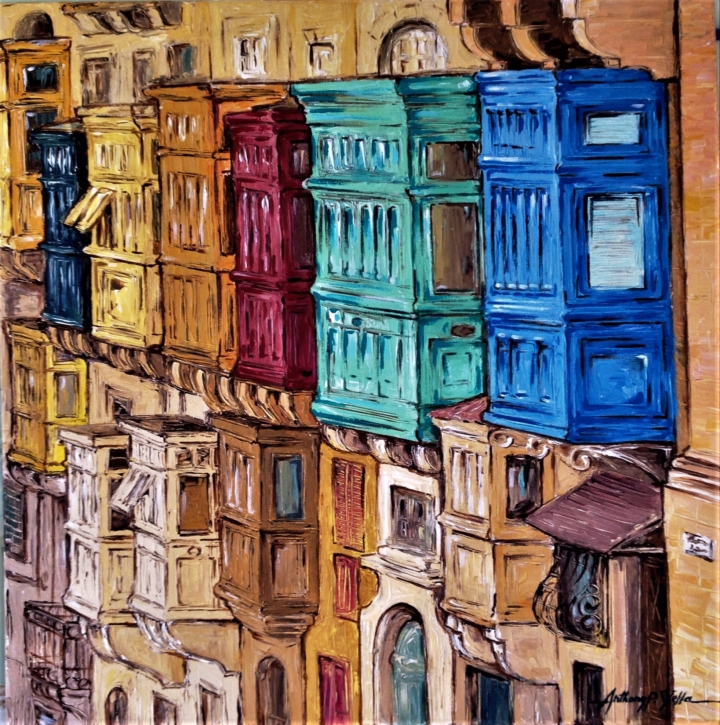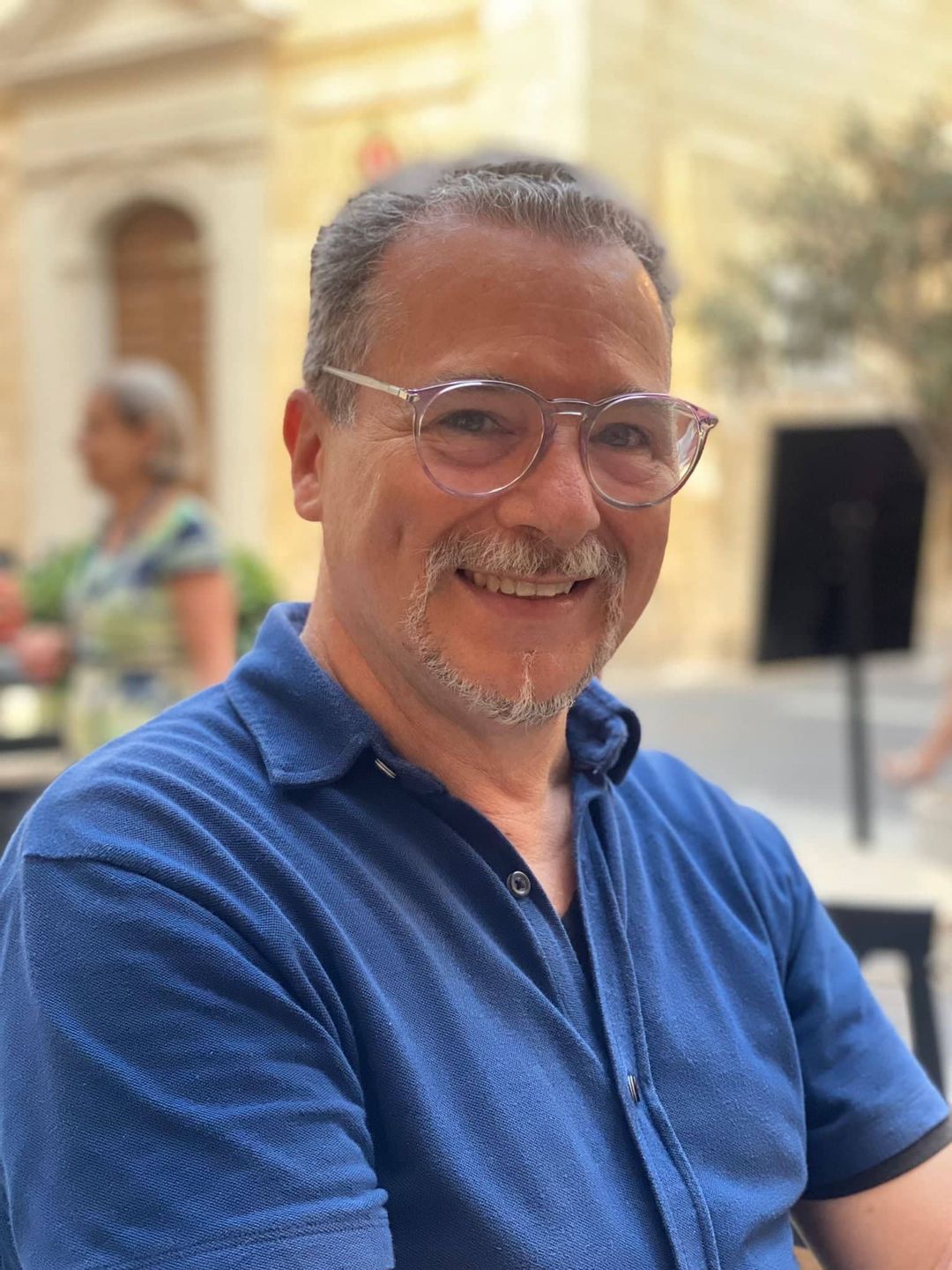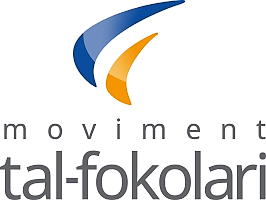Interview by Miriana Dante
Source: Città Nuova Magazine
Translation from Italian
“I paint whenever I get the chance,” says Anthony Patrick Vella, who can be defined as a multifaceted artist. He was born in Malta and during his lifetime he has accomplished many works of art that are in harmony with those Christian values of love and solidarity which have always accompanied him. He is the father of two daughters aged 32 and 28, and is the husband of Maria Rita. For 28 years he has taught art and technical drawing, and till now continues to produce valuable artistic, architectural and interior design works.

How was your passion born?
“I was born in the main street of Valletta, the capital of Malta, which was built in the sixteenth century and therefore steeped in history. I grew up surrounded by baroque churches and numerous religious events. I also worked as an altar boy for many years. When I was 6 years old, I lost my father and as a result my mother had to fulfil both roles. To support the family, I remember that she would sew until two o’clock in the morning. My mother understood that I was gifted in art, and she sent me to an art school which, luckily, was just up the road from our house.”
Which of your works is the one you are most attached to, which means the most to you?
I would have to say the Adoration Chapel which is particularly close to my heart as a believer in the Catholic faith. It required creating a place for Jesus in the Eucharist, so that the space itself would be a small reflection of a great mystery. For example, there was a groove in the wall through which I wanted to express the link between the past and the present, the history, and therefore God in the past but also the living presence of Him among us today. I like the geometry which is found in the chapel which has a traditional Maltese background.
In New City Magazine (UK), in an interview published in April 2020, you declared that for you art “is an expression of humanity because we don’t live in a vacuum but together with others”. How do you concretely transfer this concept into your paintings?
 I start off by speaking about myself: I have so many feelings, so many thoughts. It’s a two-step process: first I try to express what I feel within me, then I understand that it is a collective expression, also the result of the abundance of love I have received over the years. Materially I start to create the work, but I immediately perceive that it becomes something dynamic and greater than me. I can feel it. Apart from this, when I create I do not think but I act. I feel guided and I let myself be carried away.
I start off by speaking about myself: I have so many feelings, so many thoughts. It’s a two-step process: first I try to express what I feel within me, then I understand that it is a collective expression, also the result of the abundance of love I have received over the years. Materially I start to create the work, but I immediately perceive that it becomes something dynamic and greater than me. I can feel it. Apart from this, when I create I do not think but I act. I feel guided and I let myself be carried away.
Can you tell me how an inspiration to do a painting usually arises in you?
Lately I have been doing commissions so there is usually a “brief”, which is a specific request made by the client. But the peculiarity of a commissioned artwork is that it often begins with a phone call, and I personally visit the site; I look around at the space, but I also try to understand what the person who has contacted me has in their heart, so I try to express their desires, also asking which colours and shapes they like.
I become a sort of a chameleon in that situation: if my client prefers Baroque, then I embrace it too, but without changing that which is in my nature. I merge the client’s wishes with my own art preference which leans towards the modern. The result is that we collaborate on creating the work of art. When I am free then there are many things that inspire me. As an artist I come from a classical culture; these are my origins and they come to the surface when I’m sketching, for example, even if it’s design.
How long does it take on average to produce a work?
A long time, for many reasons. Work is one of them: during the week it’s complicated so I normally set aside Saturdays to work on my art. It usually takes me about a month to finish a job but it depends on its size. There are times when I’m free in the afternoon so I can devote myself more to my work. I realize how valid is the saying “God works in an hour”, because there are times when I produce a lot in a short space of time.
I think that the use of colours requires skill. For this reason, among your works, which are all very beautiful and engaging, I was particularly struck by “Strada Reale”. The description on your website says that the painting depicts some balconies in Valletta. Could you explain to me how it was born and why the choice to use these bright colours, which personally convey a lot of joy to me. Do they represent reality?
The inspiration was born because I lived in a street full of these balconies. In Valletta, many people used to paint their balconies in various colours and this always was struck me. However, I like to play with colours; I like them to be vibrant. I love the light of the sun, as it sets or rises, that reddish tone that it gives to things. These balconies with their colours remind me of my childhood; where I live now there aren’t any.
What was your path to becoming an artist, in the field of study, life and work experience?
In my education system, although it was rigid, there was “seniority”, that is, you passed the levels with practical experience in the field, which is a good thing because sometimes you can have many certificates and not be suitable for the job. After attending art school, I studied to become an assistant architect and architectural designer, and at the same time I attended courses at the “Art & Design Centre” in Valletta. Italian lecturers and industrial designers taught at this institute and their lessons were always very fascinating. Then I started working while also pursuing further studies.
I must admit that being part of the Focolare Movement has given me the opportunity to meet people from many walks of life, people who aren’t only focussed on the here and now. I was able to work well with many colleagues. Over time I have been an assistant architect, art director; I have done many things that have given me joy and satisfaction, I would not change anything, but this does not mean that there weren’t also some “bad moments”. When I was younger I sometimes had an existential crises; I questioned the meaning of life. But I overcame all that and found a happy environment in teaching, where in addition to the relationship built with the students, the relationship with my fellow teachers also enriches me a lot. I try to create dialogue and endeavour to be an apostle of unity.
Original interview published in Italian in Rivista Città Nuova on 5 July 2022
Visit Anthony Patrick Vella’s website and online gallery: www.anthonypatrickvella.com

Be the first to comment